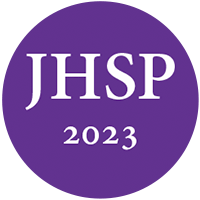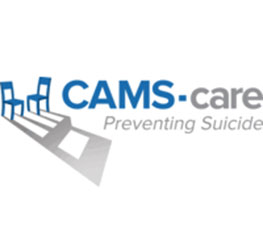The professional home for health service psychologists.
Join a community of 15,000 psychologists and trainees.
Learn it today. Apply it tomorrow.
Connecting you to what you need in your career.
Making a difference.
Lingras, K.A. Talking With Children About Race and Racism. J Health Serv Psychol 47, 9–16 (2021). https://doi.org/10.1007/s42843-021-00027-4
Children notice race from an early age. They also observe and can understand injustices among people. However, research shows that not all caregivers discuss race, identity, and racism. Some avoid the topic altogether. There are significant repercussions when we do not provide space for these formative conversations. Silence allows stereotypes, biases, and racism to be reinforced. There is a role and a responsibility for mental health practitioners to undertake these sometimes difficult conversations and practices with patients and parents. Illustrative examples to use with children of different ages are presented as a means of supporting parents in their discussion of race and racism with their children.
Visit CE.NationalRegister.org to access the continuing education course.
American Psychological Association. (2020, May 29). ‘We are Living in a Racism Pandemic’ Says APA President. Retrieved from https://www.apa.org/news/press/releases/2020/05/racism-pandemic
Anderson, R. E., & Stevenson, H. C. (2019). RECASTing racial stress and trauma: Theorizing the healing potential of racial socialization in families. American Psychologist, 74(1), 63–75. https://doi.org/10.1037/amp0000392
Ang, D. (2020). The effects of police violence on inner-city students. HKS Faculty Research Working Paper Series RWP20-016.
Anzures, G., Wheeler, A., Quinn, P.C., Pascalis, O., Slater, A.M., Heron, M., Delaney, J., Tanaka, J.W., and Kang, L. (2012). Brief daily exposures to Asian females reverses perceptual narrowing for Asian faces in Caucasian infants. Journal of Experimental Child Psychology, 112(4), 484-495. https://doi.org/10.1016/j.jecp.2012.04.005
Alang, S., McAlpine, D., McCreedy, E., & Hardeman, R. (2017. Policy brutality and Black health: Setting the agenda for public health scholars. American Journal of Public Health, 107, 662-665. https://doi.org/10.2105/AJPH.2017.303691
Bor, J., Venkatarmaani, A.S., Williams, D.R., Tsai, A.C. (2018). Police killings and their spillover effects on the mental health of Black Americans: A population-based, quasi-experimental study. The Lancet, 392(10144), 302-310. https://doi.org/10.1016/S0140-6736(18)31130-9
Bower K.M., Geller R.J., Perrin N.A., Alhusen J. (2018). Experiences of racism and preterm birth: Findings from a pregnancy risk assessment monitoring system, 2004 through 2012. Women’s Health Issues, 28(6):495-501. doi: 10.1016/j.whi.2018.06.002.
Brown, M., Hansen, M., Jones, A., May, M., and Sizemore, J. (2015). Social Justice Training. Retrieved from: https://sites.google.com/a/u.boisestate.edu/social-justice-training/about-us/our-training/privilege-checklist
Buchwald, D., Beals, J., Manson, S.M. (2000). Use of traditional health practices among Native Americans in a primary care setting. Medical Care, 38(12), 1191-1199.
CDC (2018). Reproductive health: Infant mortality. Retrieved from https://www.cdc.gov/reproductivehealth/maternalinfanthealth/infantmortality.htm
Celano, M, Collins, M, & Hazzard, A. (2018). Something happened in our town: A child’s Story About Racial Injustice. Washington, DC: APA Magination Press.
Common Sense. (2020, June 18). Parenting in Support of Black Lives: How to Build a Just Future for Kids (and How Media Can Help) [Video]. YouTube. https://www.youtube.com/watch?v=dTJyC8fO4mI&feature=youtu.be
DiAngelo, R. (2018). White Fragility: Why it’s so hard for white people to talk about racism. New York: Beacon Press.
Dunham, Y., Scott, A., Baron, S., and Carey, S. (2011). Consequences of “minimal” group affiliations in children. Child Development, 82(3). https://doi.org/10.1111/j.1467-8624.2011.01577.x
EmbraceRace. (2020). Moving ‘The Talk’ to ‘The Walk’ for Black Children [Webinar]. https://www.embracerace.org/resources/moving-the-talk-to-the-walk-for-black-children
Flicker, S.S. & Klein, A. (2020). Antiracism Resources. Retrieved from: bit.ly/ANTIRACISMRESOURCES
Gilliam, W., Maupin, A., Reyes, C., Accavitti, M. & Shic, F. (2016). Do early educators’ implicit biases regarding sex and race relate to behavior expectations and recommendations of preschool expulsions and suspensions? Retrieved from http://ziglercenter.yale.edu/publications/Preschool% 20Implicit%20Bias%20Policy%20Brief_final_9_26_276766_5379.pdf
Greenwald, A.G., Poehlman, T.A., Uhlmann, E.L. & Banaji, M.B. (2009). Understanding and using the Implicit Association Test: III. Meta-analysis of predictive validity. Journal of Personality and Social Psychology, 97, 17-41.
French, B.H., Lewis, J.A., Mosley, D.V., Adames, H.Y., Chavez-Dueñas, N.Y., Chen, G.A., Neville, H.A. (2020). Toward a psychological framework of radical healing in communities of color. The Counseling Psychologist., 48, 14-46, 10.1177/0011000019843506.
Hicken, M. T., Kravitz-Wirtz, N., Durkee, M., & Jackson, J. S. (2018). Racial inequalities in health: Framing future research. Social science & medicine, 199, 11–18. https://doi.org/10.1016/j.socscimed.2017.12.027
Higginbotham, A. (2018). Not my idea: A book about Whiteness. New York: Dottir Press.
Holmes, M.M. (2000). A terrible thing happened: A story for children who have witnessed violence or trauma. Washington, DC: APA Magination Press.
Kelly, D.J., Quinn, P.C., Slater, A.M., Lee, K., Gibson, A., Smith, M., Ge, L., and Pascalis, O. (2005). Three-month-olds, but not newborns, prefer own-race faces. Developmental Science, 8(6). https://doi.org/10.1111/j.1467-7687.2005.0434a.x
Kendi, I.X. (2019). How to be an antiracist. New York: One World/Random House.
Kinzler, K. D., Dupoux, E., and Spelke, E. S. (2007). The native language of social cognition. Proceedings of the National Academy of Sciences of the United States of America, 104(30), 12577–12580. http://dx.doi.org/10.1073/pnas.0705345104.
Kotler, J.A, Haider, T.Z. & Levine, M.H. (2019). Identity matters: Parents’ and educators’ perceptions of children’s social identity development. New York: Sesame Workshop.
McIntosh, P. (1990). White Privilege: Unpacking the Invisible Knapsack. Independent School, Winter, pp. 31–36. Retrieved from https://www.racialequitytools.org/resourcefiles/mcintosh.pdf
McKown, C. and Weinstein, R.S. (2003). The development and consequences of stereotype consciousness in middle childhood. Child Development, 74(2) https://doi.org/10.1111/1467-8624.7402012
Menakem, R. (2017). My grandmother’s hands: Racialized trauma and the pathway to mending our hearts and bodies. Las Vegas, NV: Central Recovery Press.
Oluo, I. (2018). So you want to talk about race. New York: Seal Press/Hachette.
Phelan JC and Link, B.G. (2015). Is race a fundamental cause of inequalities in health? Annu Rev Sociol, 41(1). https://chq.org/phocadownload/ChqFoundation/2019SIRMaterials/5_Racism-as-a-fundamental-cause_Phelan-and-Link_2015.pdf
Quinn, P.C., Yahr, J., Kuhn, A., Slater, A.M. and Pascalis, O. (2002). Representation of the gender of human faces by infants: A preference for female. Perception, 31(9), 1109-1121. https://doi.org/10.1068/p3331
Raising a (White) Antiracist Kid. (n.d.). Retrieved from https://docs.google.com/document/u/0/d/1PbFhBrPAfh3e5ZsrqG11RJCkxXr_7PRohDfAUVp5Ibk/mobilebasic
Staggers-Hakim, R. (2016). The nation’s unprotected children and the ghost of Mike Brown, or the impact of national police killings on the health and social development of African American boys. Journal of Human Behavior in the Social Environment, 26(3-4), 390-399. DOI: 10.1080/10911359.2015.1132864
Saad, L.F. (2020). Me and White Supremacy: Combat racism, change the world, and become good ancestor. Naperville, Illinois: Sourcebooks.
Sangrigoli, S., and De Schonen, S. (2004). Recognition of own‐race and other‐race faces by three‐month‐old infants. Journal of Child Psychology and Psychiatry, 45(7). https://doi.org/10.1111/j.1469-7610.2004.00319.x
Stamborski, A., Zimmermann N., and Gregory, B. (2020). Scaffolded Anti-racist Resources. Retrieved from: https://docs.google.com/document/u/0/d/1PrAq4iBNb4nVIcTsLcNlW8zjaQXBLkWayL8EaPlh0bc/mobilebasic?fbclid=IwAR2zMg0hEh2gv_tNIVvpNadc5PVW0hpad8W-FZj9Xjdn8qs15j3_w7U6s0c
Tatum, B.D. (2017). Why are all Black kids sitting together in the cafeteria?: And other conversations about race. New York: Basic Books/Hachette.
Trent, M., Dooley, D.G., Dougé, Section on Adolescent Health, Council on Community Pediatrics, and Committee on Adolescence. (2019). The impact of racism on child and adolescent health. Pediatrics, 144(2). DOI: https://doi.org/10.1542/peds.2019-1765
Tynes, B.M., Willis, H.A., Stewart, A.M., and Hamilton, M.W. (2019). Race-related traumatic events online and mental health adolescents of color. Journal of Adolescent Health, 65(3), 371-77. https://doi.org/10.1016/j.jadohealth.2019.03.006.
Walters, K. & Simoni, J. (2002). Reconceptualizing Native women’s health: An “indigenist” stress-coping model. American Journal of Public Health, 92(4). 520-525.
Wallace, M., Crear-Perry, J., Richardson, L., Tarver, M. and Theall, K. (2017). Separate and unequal: Structural racism and infant mortality in the US, Health & Place, 45, 140-144. https://doi.org/10.1016/j.healthplace.2017.03.012.
Wallace, J.M. & Forman, T.A. (1998). Religion’s role in promoting health and reducing risk among American youth. Health Education and Behavior, 25(6), 721-741.
Williams, D. R., Lawrence, J. A., and Davis, B. A. (2019). Racism and health: Evidence and needed research. Annual Review of Public Health, 40(1), 105-125. https://doi.org/10.1146/annurev-publhealth-040218-043750.
Xiao, N.G., Quinn, P.C., Liu, S., Ge, L., Pascalis, O., Lee, K., (2017). Older but not younger infants associate own‐race faces with happy music and other‐race faces with sad music. Developmental Science, 21(2), https://doi.org/10.1111/desc.12537
Copyright © 2025 All rights reserved. National Register of Health Service Psychologists









